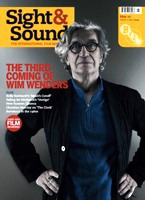Primary navigation


Newcomer Gustavo Hernández’s ingenious low-budget, single-shot horror film is a remarkable exercise in atmosphere and suspense, says Mar Diestro-Dópido
Like other Spanish-language horror films of late – The Orphanage, the [REC] enterprise, the less successful Hierro – this Uruguayan picture tracks the physical and psychological perils of a young woman, Laura, as she and her father Wilson enter a house in the woods closed up for years, to get it ready for sale by its owner Néstor. But as soon as father and daughter try to bed down for the night, a series of mysterious noises and encounters dramatically alters the tenor of their visit.
Already remade in the English language, The Silent House is based on a real story that occurred in the 1940s in Uruguay, brought to vivid life here on a shoestring budget. Directed by newcomer Gustavo Hernández, the film tries to reconstruct the story from the Polaroid stills that were found at the scene, treading familiar territory effectively and resorting to characteristic traits of the horror and psychological thriller genres – a nursery rhyme, ghostly figures running in the background and, of course, a major twist. It’s this twist that constitutes the film’s main drawback, as it retrospectively triggers certain incongruous reactions to elements that don’t work narratively, skewing our identification with the characters. In addition, the fact that Laura is dropped into the danger-zone too early on doesn’t help either, as it doesn’t allow enough time to build up the necessary tension.
That said, The Silent House has one final trick up its sleeve; the film was shot in its entirety in one take – arguably an efficient way of cutting costs but more pertinently a means of enhancing claustrophobia, a sense of being entangled in a continuous threat that never lets go. It’s not a new technique – Aleksandr Sokurov famously used it in Russian Ark in 2002, and so in a way did Hitchcock in Rope in 1948, tricking the viewer into believing that a series of ten-minute takes (the average length of a reel back then) were continuous – but cinematographer Pedro Luque skilfully turns this gimmick into an engrossing technical and visual contrivance. The action therefore plays out in real time; Florencia Colucci’s subtly incarnated Laura is an acting tour de force which, with barely any dialogue, relies on a startlingly dexterous choreography and close-ups on her brightly lit face.
A remarkable exercise in atmosphere and suspense, The Silent House is mostly filmed in the dark; the use of impromptu lighting issuing from a halogen lamp, a torch or a candle facilitating a stunning, virtually black-and-white cinematography that deepens the film’s singular sense of time and space.
There’s a mesmerising inventiveness on display throughout; Luque uses all kind of props, reflections and even a Polaroid camera to elicit shocks and to trick us into thinking we’ve witnessed counter-shots. But most amusingly he is capable of making one handheld camera fracture into a prism of shifting perspectives – lurking in the background or watching through Laura’s, the viewer’s, and even the dying victims’ eyes – making him the true puppetmaster of this labyrinthine journey.
The Red House: filmmaker Charles Burnett remembers Delmer Daves’ 1946 backwoods noir (April 2011)
Let Me In reviewed by Kim Newman (December 2010)
FrightFest 2010 preview: Mark Pilkington interviews horror handmaiden and FrightFest founder Alan Jones (August 2010)
Russian Ark: one of Sight & Sound’s 30 key films of the 2000s (February 2010)
El baño del Papa reviewed by Michael Brooke (August 2008)
The Orphanage reviewed by Maria Delgado (April 2008)
The Blair Witch Project reviewed by Charles Taylor (November 1999)